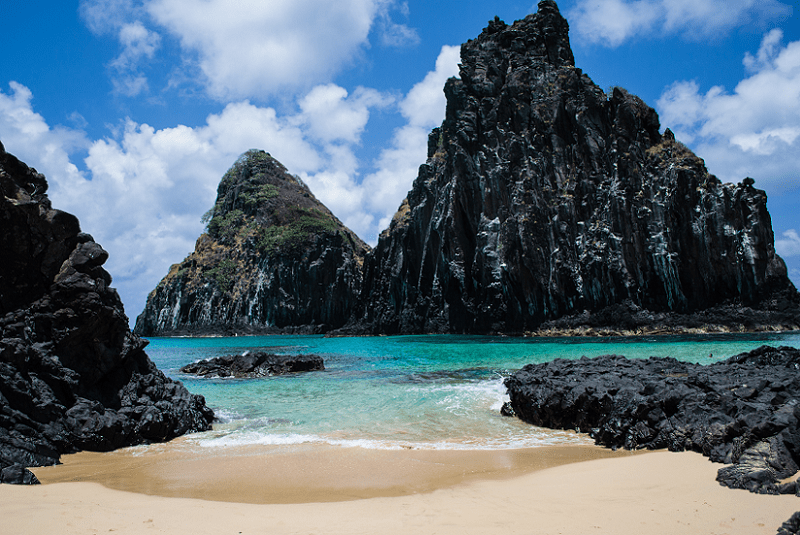Fernando de Noronha Facts
- The breathtaking location known collectively as Fernando de Noronha understandably ranks as one of the most remarkable sites on the planet. Quite unfortunately, however, this remarkable place also holds a rather regrettable distinction.
- That’s due to the fact that it’s also another of those incredible works of Nature that few people outside of its part of the world know about. Amazingly, this stunningly beautiful location also continues to remain quite sparsely populated.
- This fact helps to preserve its pristine beauty. The human population of Fernando de Noronha consists of fewer than 3,100 individuals. The entirety of this number inhabits the main island of the archipelago, which comprises the majority of the total area.
- Beginning in the year 2001, the organization UNESCO justifiably listed the location as a World Heritage Site. Fully deserved for many reasons, this mainly occurred due to the importance of the unique environment of this marvel of Nature.
- The islands of the amazing archipelago serve as home to several avian species. Its confines also form a haven for the Critically Endangered Hawksbill Sea Turtle. The surrounding waters form an important feeding ground for many sea species.
Related Articles
Fernando de Noronha Physical Description
Perhaps most notably, all of the many components of the gorgeous Fernando de Noronha archipelago impress on their own. That holds true due to the incredible fact that these actually represent the uppermost portions of an underwater mountain range.
The various islands and islets clearly reflect their volcanic origins. And these are quite numerous, as well. This beautiful archipelago actually consists of a total of 21 separate islands and islets. The vast majority of these structures measure quite small in size, though.
In point of fact, the principal island of the archipelago contains a total area measuring roughly 7.1 sq mi (18.4 sq km). This measurement represents roughly 71% of the total area of the group. The remaining 29% thus spreads across the other 20 members of the group.
Amazing Fernando de Noronha conceals another remarkable attribute from the casual observation, though. The earth, it seems, loves to continually surprise the humans inhabiting its surface. What we see here only represents the proverbial tip of the iceberg.
In point of fact, the base of this large volcanic formation lies far beneath the waves. More precisely, this sits roughly 2,480 ft (756 m) beneath the surface of the ocean. The highest known elevation of the beautiful archipelago additionally lies at 1,060 ft (323 m).
Fernando de Noronha Location, Climate, and Life
The geological formation named Fernando de Noronha formed in a region of the earth’s surface containing a variety of natural wonders. The exact area in which it lies might surprise some people, though. It’s not in the immediate vicinity of any large land mass.
It actually formed as a small archipelago in the vast Atlantic Ocean. More specifically, the site lies roughly 220 mi (354 km) off the coast of the country of Brazil. The entirety of the archipelago forms a part of this country, situated in the eastern part of South America.
The climate of each of the islands and islets also has a primarily tropical nature. Surprisingly, given this, the local temperature actually varies very little, either between day and night, or month to month. The marvelous site only has two seasons, rainy and dry.
The tantalizing destination serves as home to a highly diverse population of plant and animal species. Incredibly, many of these various species exist nowhere else in the world. In fact, a known total of at least 15 endemic varieties of plants fit that description.
Included among the species present on Fernando de Noronha and nowhere else on earth are three species of birds, and two reptilians. An indigenous rodent species known nowhere else once lived here. This animal became extinct long before humans found the location, though.
The various beautiful islands and islets remain famous for yet another specific reason. That’s the great beauty, extensive variety, and quantity of marine life in the local waters. This includes such creatures as dolphins, sea turtles, and numerous albatrosses.
Features Sharing Its Region
Check out our other articles on 5 Natural Marvels of Iceland, Indian Giant Squirrel, Mount Erebus, Texas Horned Lizard, Blue Shark, African Penguin, Sego Lily, Queen of the Andes

